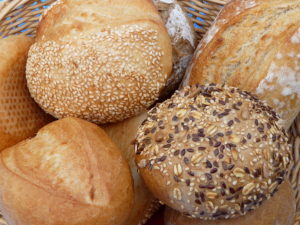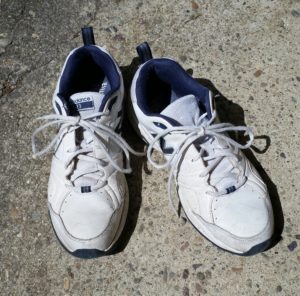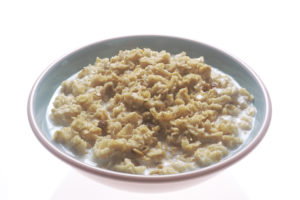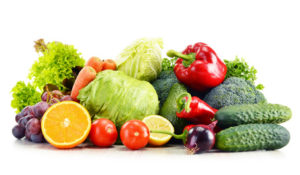 Eating whole grains is good - lower death rate, fewer cardiovascular disease related deaths, fewer cancer deaths! And recent research (a review of studies) showed that the more whole grains consumed, the lower the death rate. Current dietary guidelines suggest 3 servings a day. Whole grains include: whole wheat, barley, buckwheat, millet, oats, quinoa, brown rice, rye, bulgur, spelt,and wild rice. Whole grains provide many nutrients, such as fiber, B vitamins, and minerals. From Medical Xpress:
Eating whole grains is good - lower death rate, fewer cardiovascular disease related deaths, fewer cancer deaths! And recent research (a review of studies) showed that the more whole grains consumed, the lower the death rate. Current dietary guidelines suggest 3 servings a day. Whole grains include: whole wheat, barley, buckwheat, millet, oats, quinoa, brown rice, rye, bulgur, spelt,and wild rice. Whole grains provide many nutrients, such as fiber, B vitamins, and minerals. From Medical Xpress:
Eating more whole grains linked with lower mortality rates
Eating at least three servings of whole grains every day could lower your risk of death, according to new research in the American Heart Association's journal Circulation. Although dietary guidelines around the world have included whole grains as an essential component of healthy eating patterns, people aren't eating enough, according to the analysis. In the United States average consumption remains below one serving a day, despite the long-time recommendation of three servings a day.
In the first meta-analysis review of studies reporting associations between whole grain consumption and death, researchers noted that for about every serving (16 grams) of whole grains there was a: 7 percent decreased risk in total deaths; 9 percent decline in cardiovascular disease-related deaths; and 5 percent decline in cancer-related deaths.
The more whole grains consumed, the lower the death rate. According to researchers, when three servings (48 grams) were consumed daily the rates declined: 20 percent for total deaths; 25 percent for cardiovascular deaths; and 14 percent for cancer-related deaths.
"Previous studies have suggested an association with consumption of whole grains and reduced risk of developing a multitude of chronic diseases that are among the top causes of deaths, although data linking whole grain intake and mortality were less consistent," said Qi Sun, M.D., Sc.D., senior author of the study and assistant professor at the Harvard T.H. Chan School of Public Health in Boston, Massachusetts. "These findings lend further support to the U.S. government's current Dietary Guidelines for Americans, which suggest higher consumption of whole grains to facilitate disease prevention."
Whole grains, such as whole wheat, oats and brown rice, contain dietary fiber, which may help improve blood cholesterol levels, and lower the risk of heart disease, stroke, obesity and type 2 diabetes. Dietary fiber can also make you feel full longer, so you may eat fewer calories.
This analysis included 12 studies published through February 2016 and unpublished results from the National Health and Nutrition Examination Survey (NHANES) III, conducted from 1988 to 1994, and NHANES 1999-2004. Of the reviewed studies, 10 were conducted in U.S. populations, three in Scandinavian countries and one in the United Kingdom. The combined studies involved 786,076 men and women with 97,867 total deaths, 23,597 deaths from cardiovascular disease, and 37,492 deaths from cancer.

 A recent
A recent  Surprising results (to me at least) from research comparing various diets and incidence of several cancers in 11,082 individuals in the Netherlands over a 20 year period. I expected the daily meat eaters to have higher rates of the 3 cancers studied, but no....
Surprising results (to me at least) from research comparing various diets and incidence of several cancers in 11,082 individuals in the Netherlands over a 20 year period. I expected the daily meat eaters to have higher rates of the 3 cancers studied, but no.... Another community of microbes found in humans in areas once thought to be sterile (without bacteria) - the ovaries and fallopian tubes in the female upper reproductive tract. And the interesting thing is that once again we see differences in the bacterial communities of areas with and without cancer (here the ovaries). From Science Daily:
Another community of microbes found in humans in areas once thought to be sterile (without bacteria) - the ovaries and fallopian tubes in the female upper reproductive tract. And the interesting thing is that once again we see differences in the bacterial communities of areas with and without cancer (here the ovaries). From Science Daily: New research looked at people who "aged successfully" over a 10 year period compared with those who were "suboptimal agers" or had died. The successful agers were less likely to smoke, and have higher intakes of fiber from fruits, breads, and cereals (primarily from rolled oats and whole grain breads), but not from vegetables. Successful aging was defined as including an absence of disability, depressive symptoms, cognitive impairment, respiratory symptoms, and chronic diseases including cancer, coronary artery disease, and stroke.
New research looked at people who "aged successfully" over a 10 year period compared with those who were "suboptimal agers" or had died. The successful agers were less likely to smoke, and have higher intakes of fiber from fruits, breads, and cereals (primarily from rolled oats and whole grain breads), but not from vegetables. Successful aging was defined as including an absence of disability, depressive symptoms, cognitive impairment, respiratory symptoms, and chronic diseases including cancer, coronary artery disease, and stroke.  As we know, chronic inflammation is linked to cancer and other diseases. It is long-term persistent low-grade inflammation, and it has a "wear and tear" effect on the body. What causes chronic inflammation? Being overweight or obese, sedentary lifestyle, Western (low fiber, high processed foods and meat) diet, chronic illnesses, viruses or bacteria (e.g., gum disease), smoking, air pollution, stress, excessive alcohol intake. It often does not have symptoms, but doctors can test for C-reactive protein levels (CRP), which increase when the body is inflamed. So you absolutely want to lower chronic inflammation if you can.
As we know, chronic inflammation is linked to cancer and other diseases. It is long-term persistent low-grade inflammation, and it has a "wear and tear" effect on the body. What causes chronic inflammation? Being overweight or obese, sedentary lifestyle, Western (low fiber, high processed foods and meat) diet, chronic illnesses, viruses or bacteria (e.g., gum disease), smoking, air pollution, stress, excessive alcohol intake. It often does not have symptoms, but doctors can test for C-reactive protein levels (CRP), which increase when the body is inflamed. So you absolutely want to lower chronic inflammation if you can. Great article about cancer and sugar. Yes, there is more and more research recently finding a connection with sugar, raised insulin levels, and cancer (as in sugar feeds cancer). Do go read it. Some excerpts from the May 15 Sunday magazine of the NY Times:
Great article about cancer and sugar. Yes, there is more and more research recently finding a connection with sugar, raised insulin levels, and cancer (as in sugar feeds cancer). Do go read it. Some excerpts from the May 15 Sunday magazine of the NY Times: